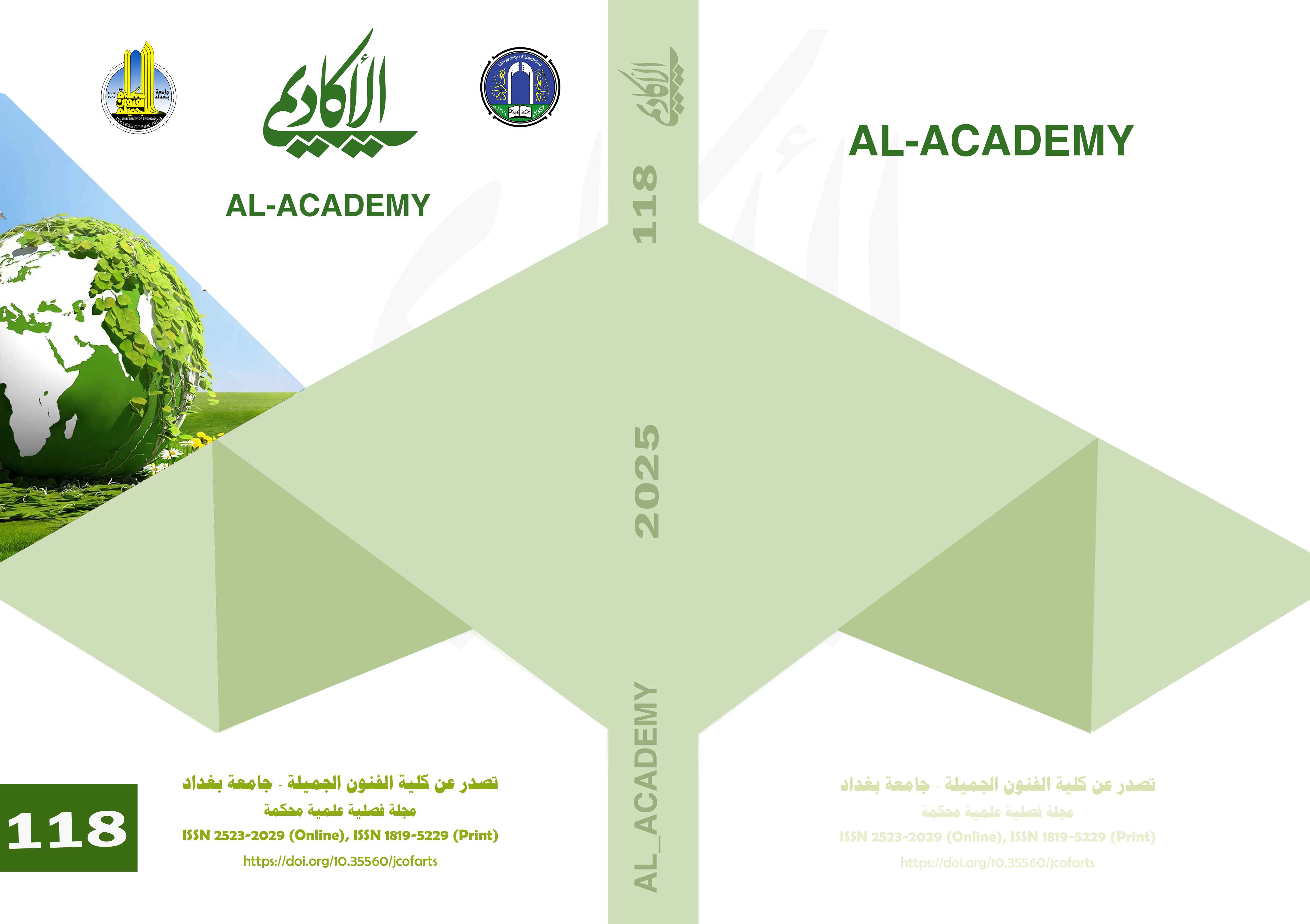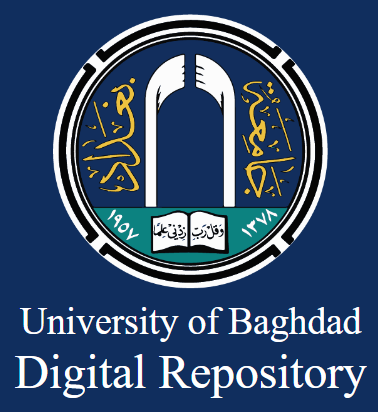تمثلات الاستعارة في تصاميم أقمشة الأزياء
DOI:
https://doi.org/10.35560/jcofarts1672الكلمات المفتاحية:
التمثلاث، المفهوم، الأنماط، الاستعارة، المرجعياتالملخص
تمثلت الاستعارة بقيام المصمم بتأصيل الخطاب التصميميّ عن طريق تمثيله لمجموعة من الرموز التراثية والحضارية المهمّة في تاريخ مجتمعه، ليفصح بها عن هُويته الحضارية والبيئية، وهذا قد يعكس قوة تعالق واعتزاز المصممّ بالجذور، ورغبته الجامحة في إظهار قوة الهُوية في مجمل أرجاء الأزياء، إذ إنّ الاستعارة تُعدّ مرآةً تعكس قدرة الخيال على رصد دلائل التشابه في الكون ، وهي وسيلة تعيد تشكيل الكون عن طريق تكّوين واقع جديد. من هنا صاغت الباحثة مشكلة بحثها في عرض السؤال الآتي: ما تمثلات الاستعارة في تصاميم أقمشة الأزياء؟ جاء البحث في ثلاثة فصول، وهي على النحو الآتي: تضمن الأول مشكلة البحث أمّا هدف البحث فتمثل في التعرف إلى تمثلات الاستعارة في تصاميم أقمشة الأزياء؟ أمّا الفصل الثاني فقد تضمن الإطار النظري وكان على مبحثين ، تضمن المبحث الأول (مفهوم الاستعارة وأنماطها )، والمبحث الثاني (مرجعيات الاستعارة في تصميم أقمشة الأزياء) ،أمّا الفصل الثالث فعرض أهم الاستنتاجات التي توصلت إليه الباحثة ، ومنها: ـ
- تسهم الاستعارة في إحداث الانسجام في إنتاج تصميم أقمشة الأزياء على المستوى الفكري عبر استعمال العناصر الإبداعية والمستوى الثاني عملية إنتاج الفكرة التصميمية.
- إنّ الاستعارة تحمل في طياتها التخيل لإيجاد أشكال جديدة قائمة على التشبيهات الذهنية الخفية التي تُدمج في سياق واحد في تصميم أقمشة الأزياء.
المراجع
Abdel Nour, J. (1979). Literary Dictionary. Beirut: Dar Al-Ilm Lil-Malayin.
Abu Al-Adous, Y. (1997). Metaphor in Modern Literary Criticism and its Cognitive and Aesthetic Dimensions. Jordan: Al-Ahliya for Publishing and Distribution.
Al-Ain, K. (2005). The Poetics of Displacement - A Study in the Beauty of Deviation. Jordan: Dar Al-Yazouri.
Al-Bakr, M. (2009). Field Research in Popular Heritage. Damascus: Directorate of Popular Heritage.
Al-Dulaimi, M. (2014). Symbols of Heritage between Authenticity and Innovation in the Designs of Al-Hilla Textile Factory Fabrics. Baghdad : University of Baghdad - College of Fine Arts - Department of Design, Master’s Thesis.
Al-Harrasi, A. (2002). Studies in Conceptual Metaphor. Amman: Oman Establishment for Printing, Publishing and Advertising.
Al-Jawhari, M. (1978). The Scientific Study of Popular Beliefs. Cairo: Dar Al-Kitab for Distribution.
Asfour, J. (1992). The Artistic Image in the Critical and Rhetorical Heritage of the Arabs. Beirut: Arab Cultural Center.
Eco, U. (2005). Semiotics and the Philosophy of Language. (A. Al-Somai, Trans.) Beirut: Center for Arab Unity Studies.
etten, j. (2010). Form and Design. (S. M. Ghan, Trans.) Egypt: Hala Publishing and Distribution.
Ibn Manzur, M.-F. (1988). Lisan al-Arab. Beirut: Dar al-Masadir.
Madkour, I. (1983). The Philosophical Dictionary. Cairo: General Authority for Princely Printing Affairs.
Matloub, A. (1983). Dictionary of Rhetorical Terms. Baghdad: Iraqi Scientific Academy.
Nasr, A. (1980). Imagination, Its Components and Functions. Egypt: Egyptian General Book Authority.
Nassif, M. (1995). Language, Interpretation and Communication. Kuwait: National Council for Culture, Arts and Letters.
Ricoeur, P. (2003). The Theory of Interpretation – Discourse and Surplus Meaning. (S. Al-Ghanimi, Trans.) Morocco: Arab Cultural Center.
Saleh, Q. (1982). Psychology of Color and Shape Perception. Baghdad: Dar Al-Rasheed.
Trainor, W. (2005). Metaphor in the Language of Cinema. (I. A. Aziz, Trans.) Cairo: Supreme Council of Culture.














